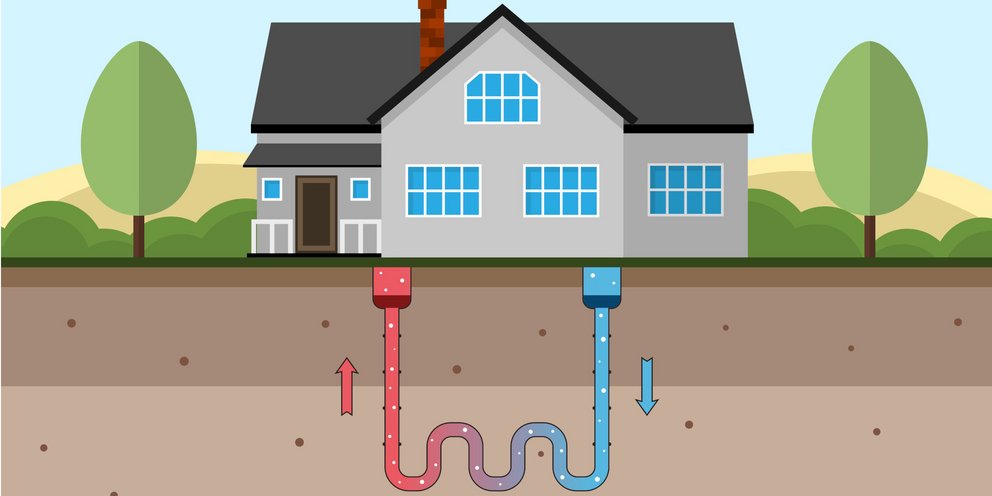ANDROULAKIS company presents you with the best solutions and the most modern proposals for every need and requirement for you and your home.

Under your feet lies a renewable energy source!
Your uncovered space can become a renewable energy source for comfortable heating and cooling. Now you can safely, reliably, and efficiently obtain heating and cooling from a single device. Geothermal energy represents cutting-edge technology in heating and cooling. Heat is transferred to and from the ground for climate control of indoor spaces. Compared to conventional systems, geothermal energy can save you 30% to 70% on your energy bill. Geothermal energy is the safest, cleanest, and most reliable air conditioning system you can buy.
Geothermal energy is defined as the exploitation of energy from the interior of the Earth, where the use of a geothermal heat pump allows the transfer of heat to and from the ground to produce cooling, heating, and hot water for domestic and larger-scale applications. It harnesses the temperature found in the upper geological layers without requiring the existence of a geothermal field. This stable temperature is called the Undisturbed Soil Temperature and is encountered just 1.5m below the Earth’s surface. Geothermal systems for shallow depths are recognized worldwide as the most efficient and environmentally friendly heating and cooling systems available today.
2) Installation of a closed-loop with vertical coil pipes
Vertical geothermal systems have the heat exchanger positioned vertically on the soil surface, within boreholes drilled by a drill, at depths usually ranging from 50-150 m. A closed loop continuously circulates the solution that carries heat under pressure. A circulator is necessary for the smooth supply of heat to the heat pump. The ground and home circuit is closed, and as a result, no salt deposits occur, resulting in low system maintenance requirements.
3) Installation of an open-loop system – Drilling for extraction and return of groundwater
Open-loop geothermal systems use underground water (from wells) or surface water (from lakes, wells, rivers, or the sea) as a source of heat and cooling. They use a geothermal heat pump (GHP) to extract water from an underground reservoir using a well and an intermediate water/water heat exchanger inserted between the geothermal heat pump and the open loop. This system is suitable for areas with shallow groundwater depths, requiring minimal water drilling. These drills utilize the stable temperature of the underground reservoir throughout the year, regardless of prevailing atmospheric conditions.